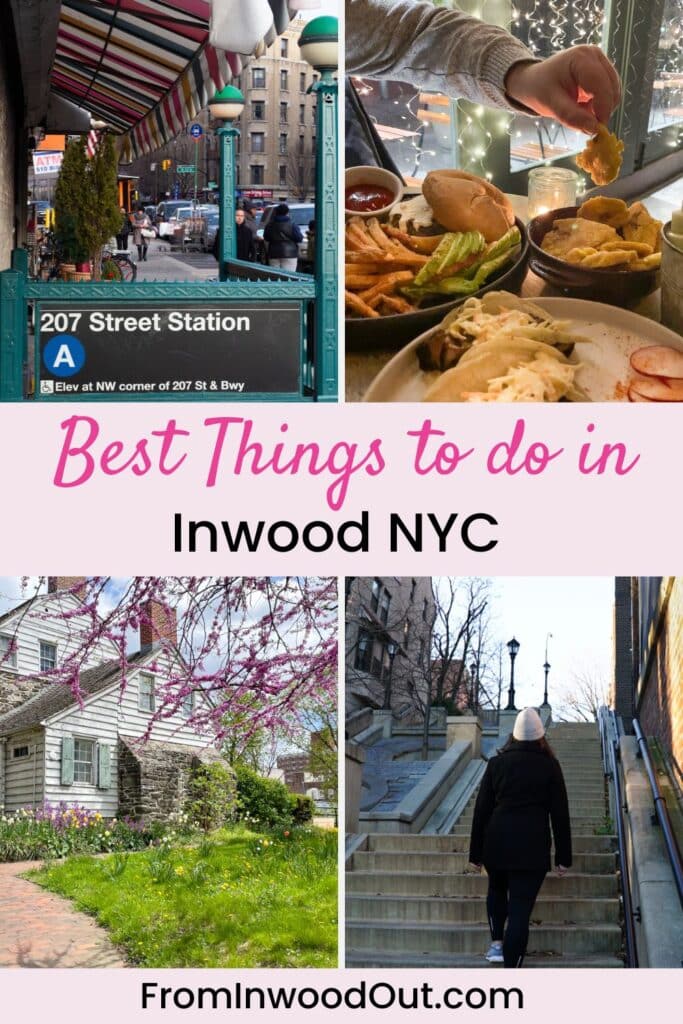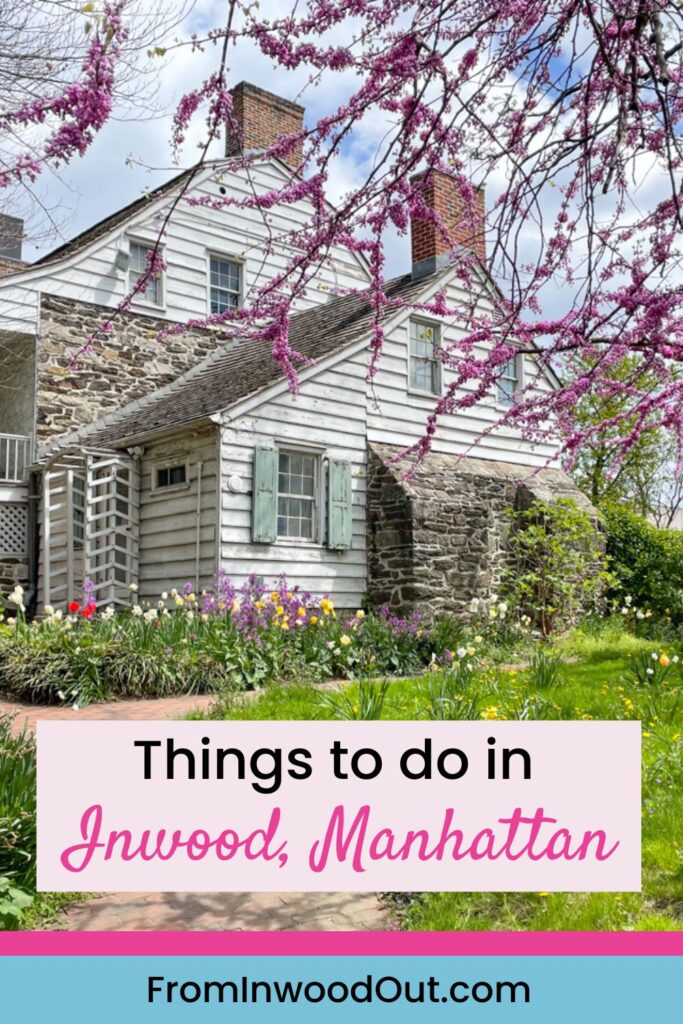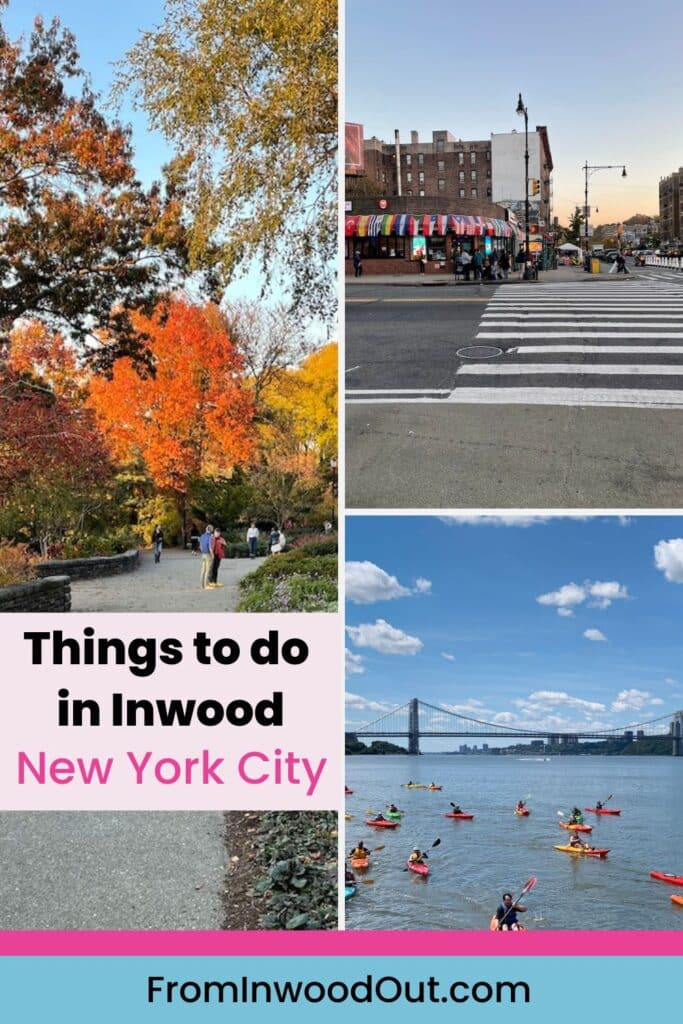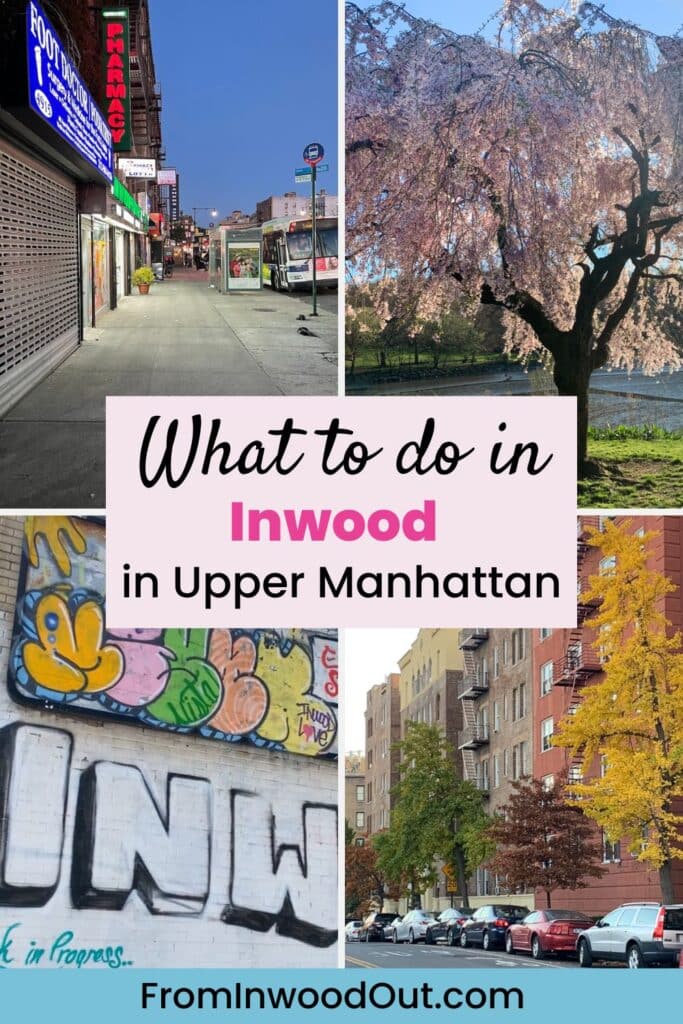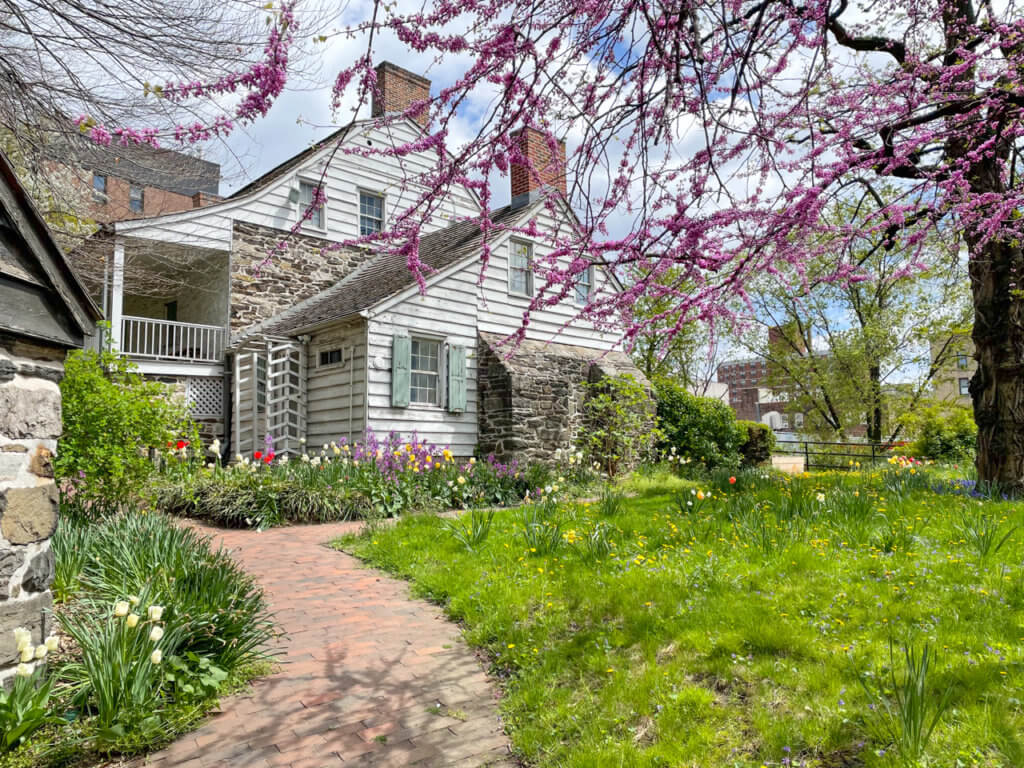
[Updated September 28, 2022] Looking for things to do in Inwood, NYC?
Not to worry. This little neighborhood in Upper Manhattan is packed with restaurants and cultural events, and outdoor activities as varied as hiking, kayaking, and biking are at your fingertips.
So…where is Inwood Manhattan anyway? That’s usually the first question I get when I tell people I live here.
For anyone who lives in Manhattan, Inwood is your neighbor to the north, located on the northernmost tip of the island. Heading any further uptown would place you firmly in the Bronx (with the exception of the Marble Hill situation).
The Inwood section of Manhattan is surrounded by the Harlem River to the east and the Hudson River to the west, with Spuyten Duyvil Creek to the north connecting the two waterways. The boundaries of Inwood run from 220th Street down to Dyckman Street. Washington Heights is the neighborhood just below Inwood.
Note: Since I’m mentioning neighborhood boundaries, I have to acknowledge that some attractions in this post are actually south of Dyckman, so technically Washington Heights, but are so much a part of my regular routine that I still consider them to be in “my neighborhood.” Hopefully you’ll allow the geographic inaccuracy!
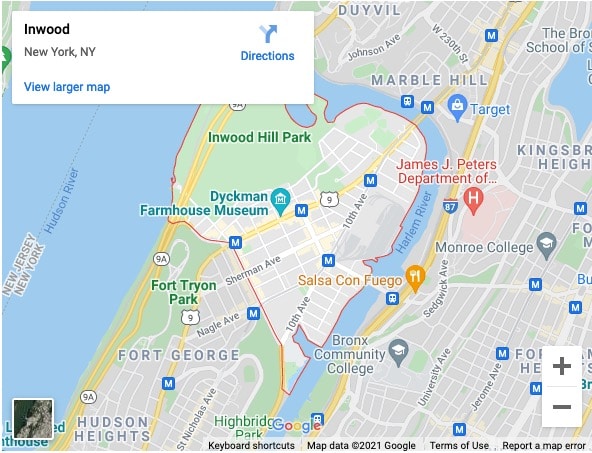
Click for an interactive Google map version of the above map.
If you’ve traveled to Inwood as a tourist, it was likely to visit The Met Cloisters or the Dyckman Farmhouse Museum. Perhaps word has spread about the happening restaurant scene, or maybe you’re interested in exploring more non-touristy attractions in New York City. If that’s the case, you’ll find plenty of them in Inwood. Spending time here, even for a day, shows how unique NYC neighborhood personalities can be.
For whatever reason you find yourself here, I’m glad you made it and I hope this article guides you toward the very best things to do in Inwood.
Read on for a short history of the neighborhood or just keep scrolling if you’re more interested in things to do while you’re here.
A brief history of Inwood, NYC

Inwood carries a wealth of history within its boundaries, a history that, like much of America, marks the displacement of Indigenous people by European settlers.
Henry Hudson arrived on the island of Manhattan in 1609, sailing in aboard a vessel commissioned by the Dutch West India Company. His arrival ultimately led to the Dutch colony on the east coast known as New Netherland.
The colonizers set up trading posts up and down the Hudson River and attracted more settlers from Europe as word spread about the region’s fertile farmlands, rich fur trading opportunities, and abundance of natural resources.
Many settlers grew rich in New Netherland, even at the expense of others. The Dutch brought enslaved people to the colony in 1626, many of whom toiled on farms in Upper Manhattan. And then, by the early 18th century, the indigenous Lenape tribe that populated the rural landscape had been forced out by conflicts created by the settlers.
A lot of evidence of Inwood history was discovered beneath its soil. Archeological excavations in the late 19th century uncovered Lenape tools and weapons as well as—incredibly—fossilized bone fragments proving that Mastodons once roamed these parts.
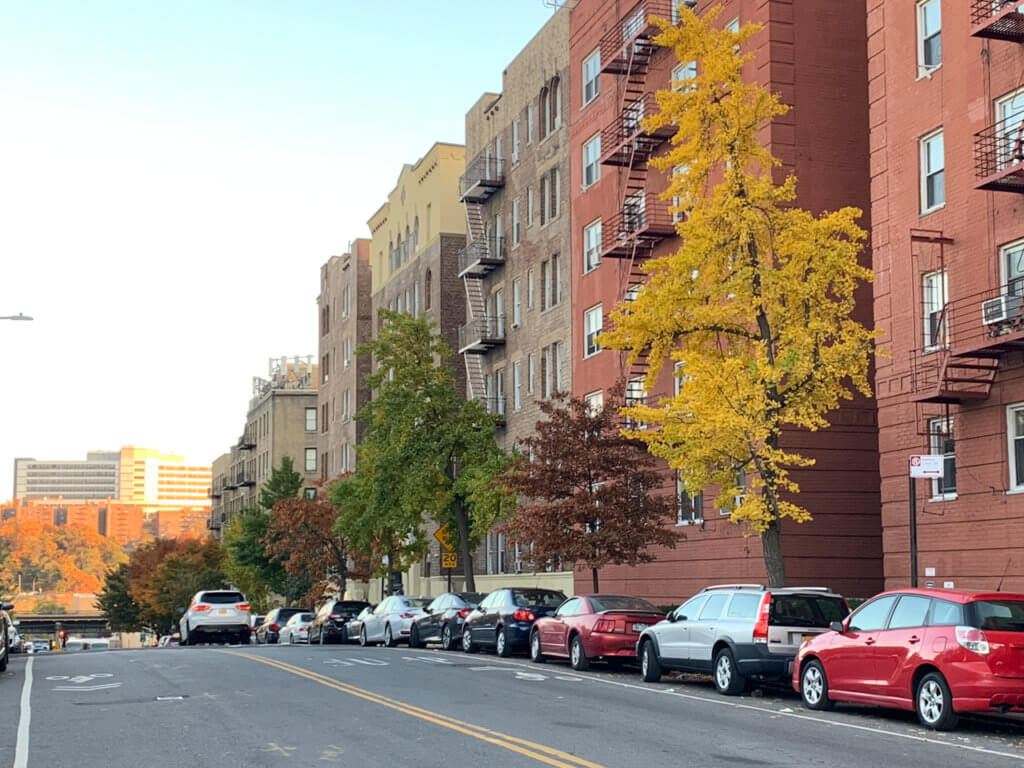
In the early 1900s, as the New York City subway made its way uptown and developers began to break ground for shops, roads, and businesses to serve the newly thriving neighborhood, military artifacts like bullets and buttons, dating back to the Revolutionary War, were found.
In 1903, additional construction unearthed a slave burial ground that included headstones and human remains. The site is now the paved over parking lot of a public school, and the Dyckman Farmhouse Museum is currently working toward honoring the enslaved individuals who were buried there with a plaque to mark the spot.
As the era of the Gilded Age took hold in New York City, the wealthy built country homes in what is now Inwood Hill Park and then, when the neighborhood fell out of fashion with the rich, those homes transformed into institutions that treated drug addicts and tuberculosis patients.
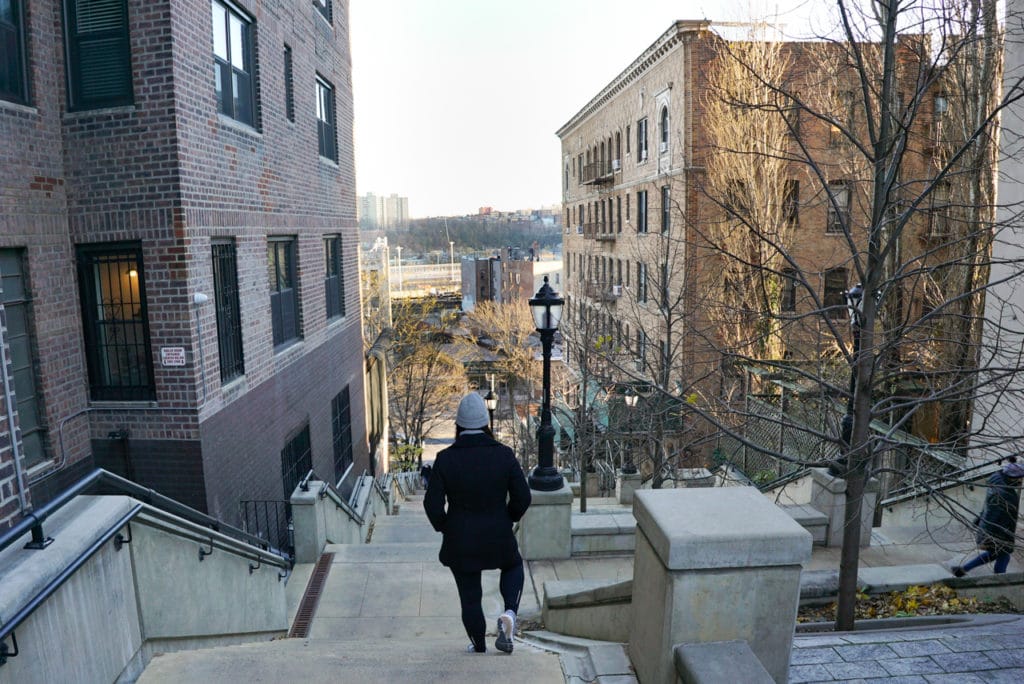
When the subway made Inwood a viable neighborhood to live in, people of mainly Irish and Jewish descent moved here but as the century moved forward, the population transformed and today Inwood is largely defined by its Dominican identity.
Tons of things to do in Inwood reflect this centuries-old history, which makes it such an interesting neighborhood to explore.
Where to Learn More about Inwood History
There’s a lot of love for Inwood history, which means books have been written and lectures delivered on the subject. I’ve only touched on a some of the historical highlights but if you want to learn more, here are four excellent sources.
- Lost Inwood-A book rich with photos and history of Inwood, NYC, written by neighborhood historians Cole Thompson and Don Rice.
- NY Adventure Club-An organization offering in-person and virtual educational programming; many lectures delve into Inwood’s history.
- Dyckman Farmhouse Museum-A museum with a wealth of local information on their website and via educational programming. Read more about the Dyckman Farmhouse Museum below.
- The Island at the Center of the World-A book with a comprehensive history of Dutch Manhattan, written by Russell Shorto.
Now on to the fun stuff! From gorgeous city parks to a major museum to lively streets and a diverse restaurant scene, Inwood has a lot to explore. Below are some of the absolutely best things to do in Inwood.
Explore the Great Outdoors in Inwood
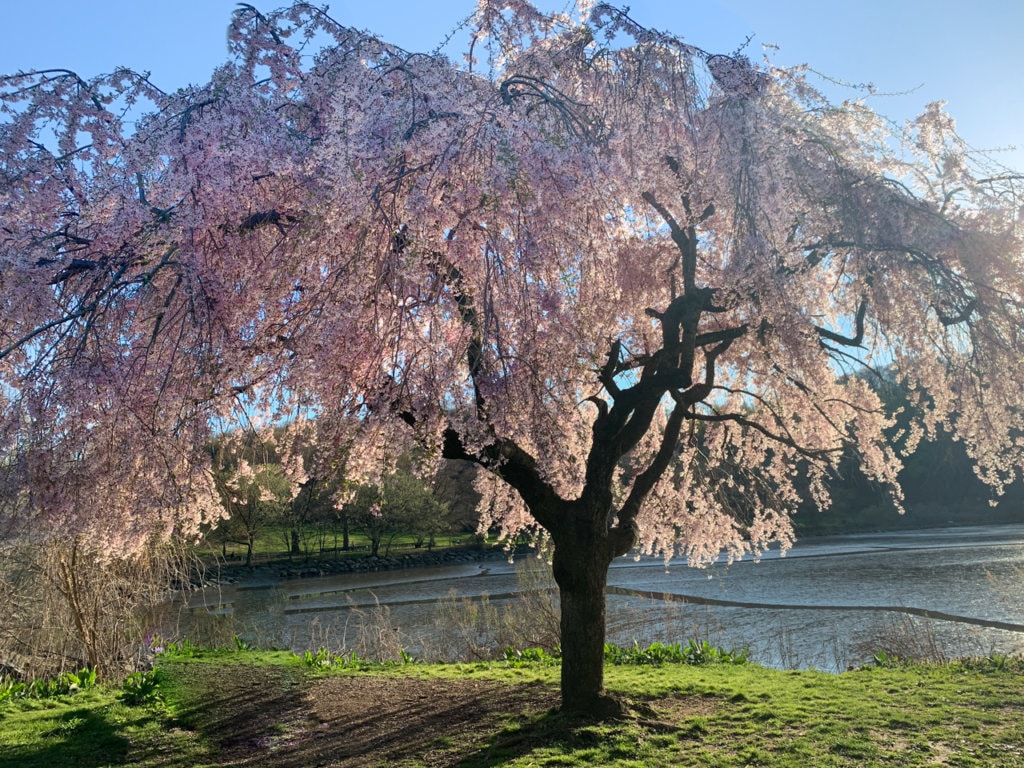
In my opinion, the best nature in New York City is right here in Inwood, where opportunities exist for nature walks, hiking, biking, kayaking, and more. At Inwood Hill Park, it’s possible to hike along interconnected trails that meander through a forest, barbecue on a peninsula near the water’s edge, watch local teams compete in a baseball game, and lounge on a spacious green lawn.
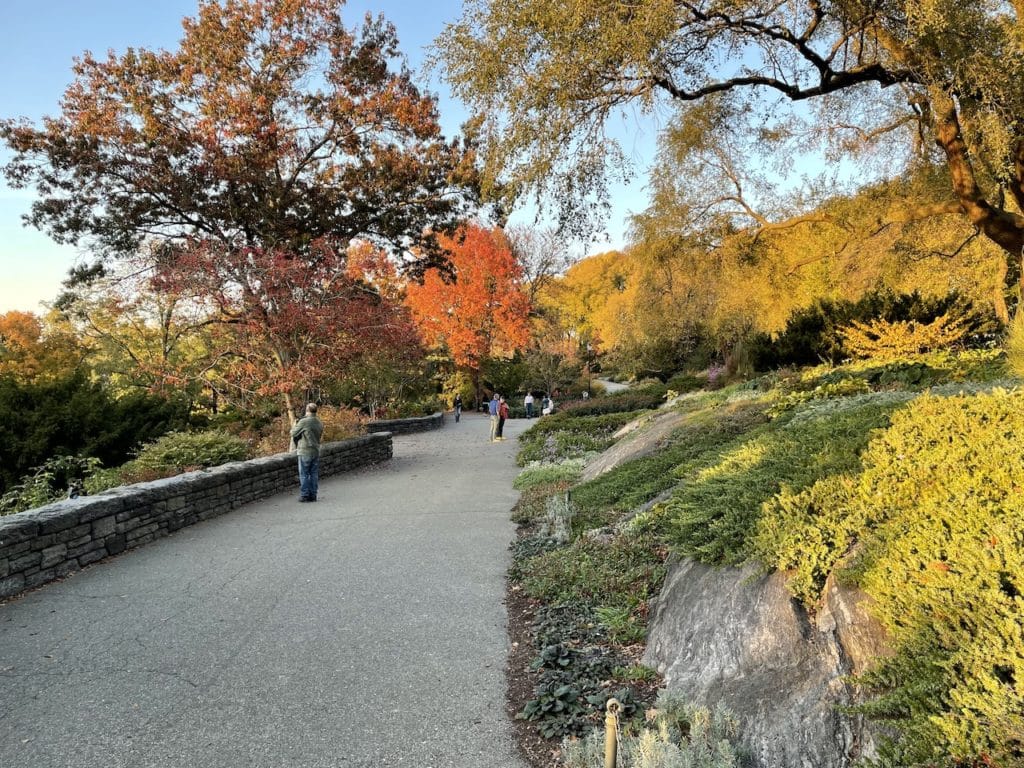
Further south, Fort Tryon Park has trails that take you along winding paths, through scenic gardens, and up and down narrow concrete steps. The Cloisters museum is also located here. In the summer, don’t miss the opportunity to kayak on the Hudson River, surrounded Upper Manhattan views at their finest. Cyclists can also bike the paved trail here that follows the entire length of Manhattan.
When you’re thinking about what to do in Inwood, be sure to spend at least a little time in the great outdoors!
View Medieval Art at The Met Cloisters
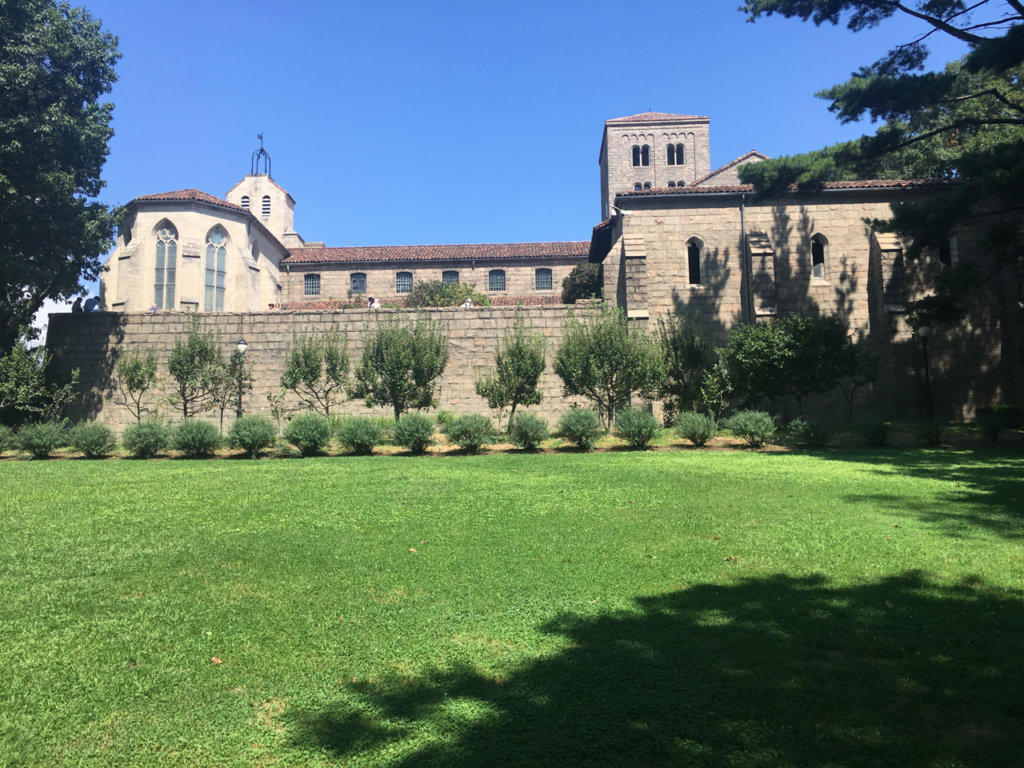
Of all the things to do in Inwood, this is an absolute must.
The Met Cloisters is a branch of the Metropolitan Museum of Art and probably the biggest tourist attraction in the neighborhood. The Medieval building sits high on a hill in Fort Tryon Park, with views that sweep across the Hudson River to the Palisades and down to the George Washington Bridge.
And inside the museum?
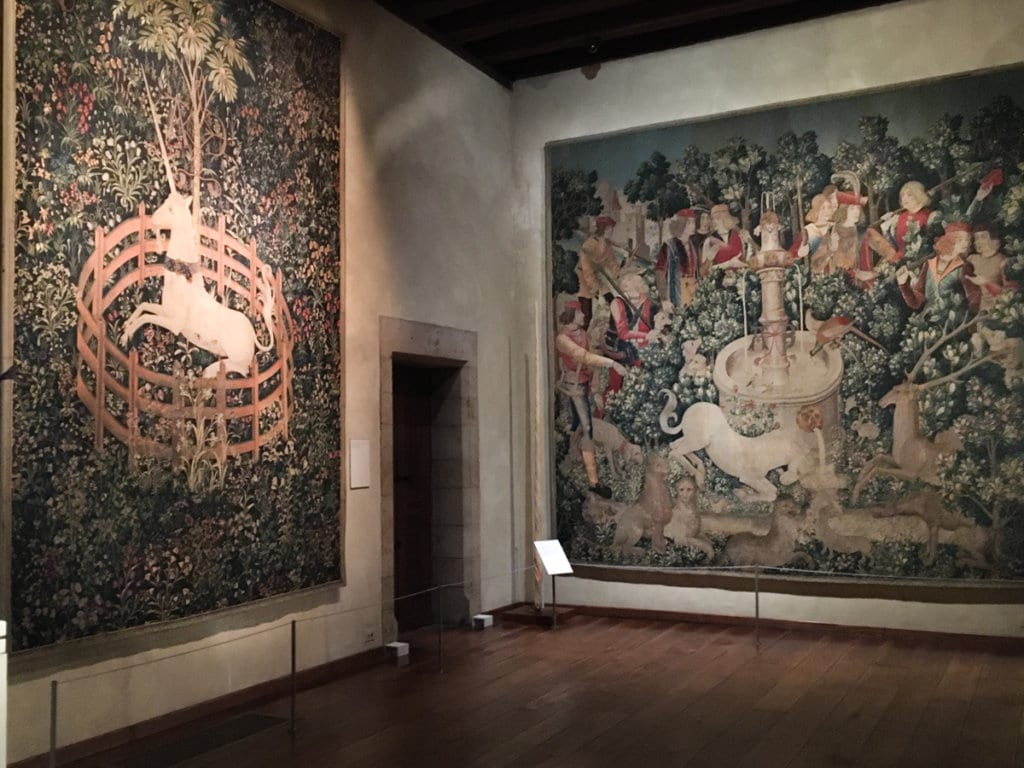
Here in this little corner of New York City are the Unicorn Tapestries, pieces that some say are among the greatest works of art in the world. Made of woven silk and wool, the series of tapestries are also known as The Hunt of the Unicorn, and some speculate that the scenes represent the events leading up to the crucifixion of Jesus Christ.
The origin of the intricately woven Unicorn Tapestries remain somewhat a mystery, though they were most likely made in Belgium. The earliest record of their existence dates to 1680. They eventually ended up in the possession of John D. Rockefeller until 1937, when he gave them to the museum.
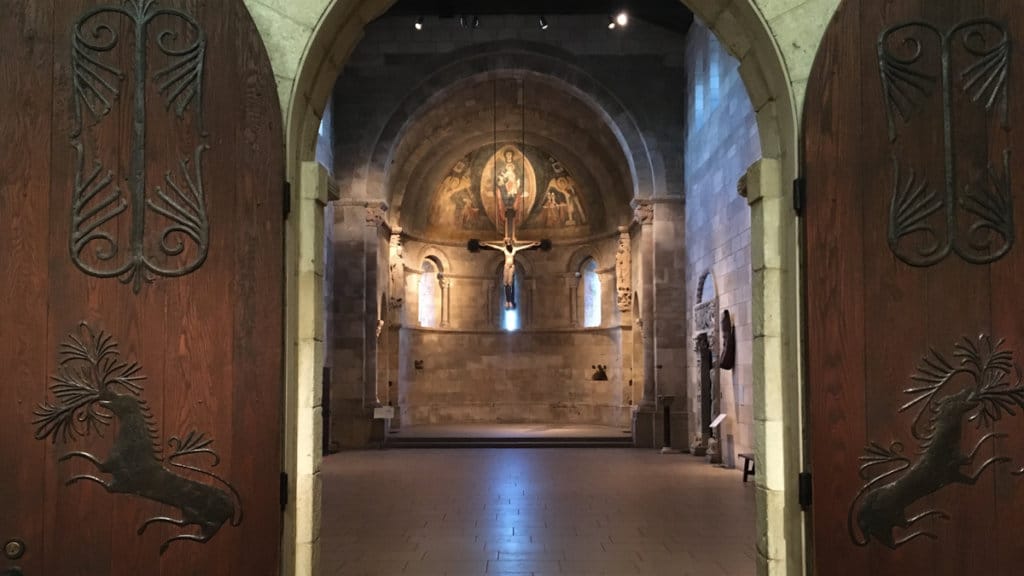
I love visiting The Cloisters. Just strolling through the galleries with no agenda is enjoyable and will take you past impressive art, artifacts, and structures that are, to me, incomprehensibly old. The museum has thick concrete walls and high ceilings, which lend to hushed voices and quiet echoes, elements that come together to create a warm sense of peace.
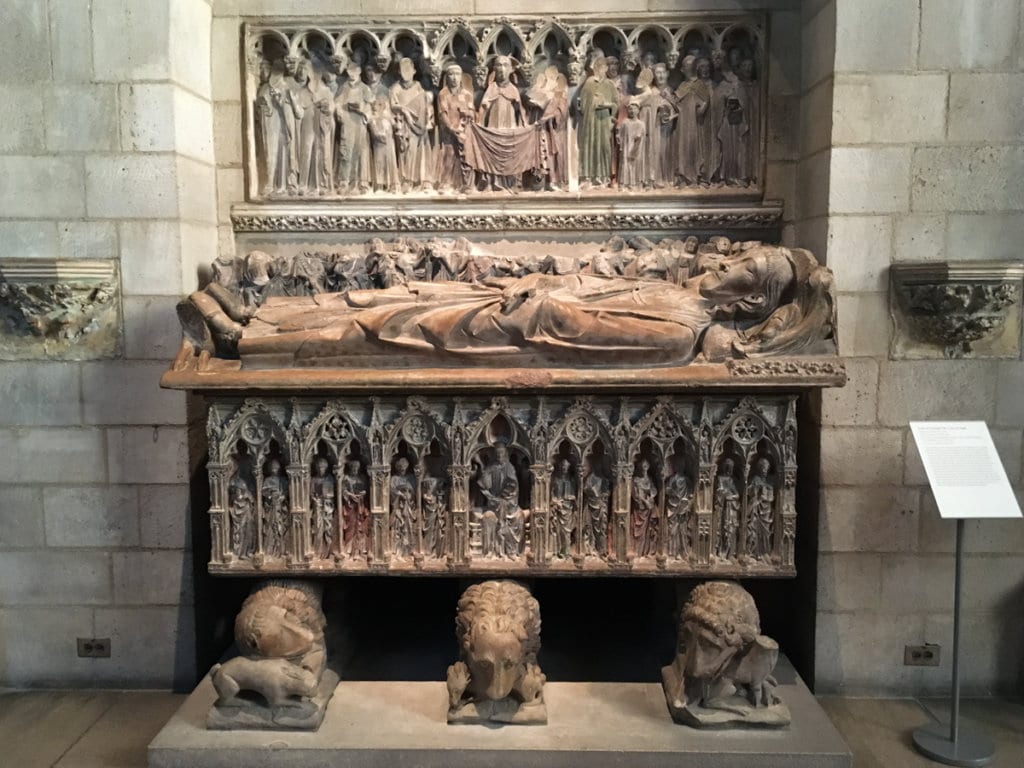
Also, unlike the Met on Fifth Avenue, I think it’s possible to see almost everything on exhibit at The Cloisters in one visit. However, if you’re crunched for time, there are several displays that must be seen. The Unicorn Tapestries (Gallery 17) are first and foremost, but I also love:
- The Gothic Chapel, which is filled with 13th and 14th century tomb effigies. Located in Gallery 09.
- The Reliquary Busts of Female Saints from 1520-30. Located in Gallery 16.
- The dramatic 12th century Crucifix. Located in Gallery 02.
- The outdoor gardens, filled with herbs and medicinal plants from the Middle Ages, and various flowers and trees depending on the season.
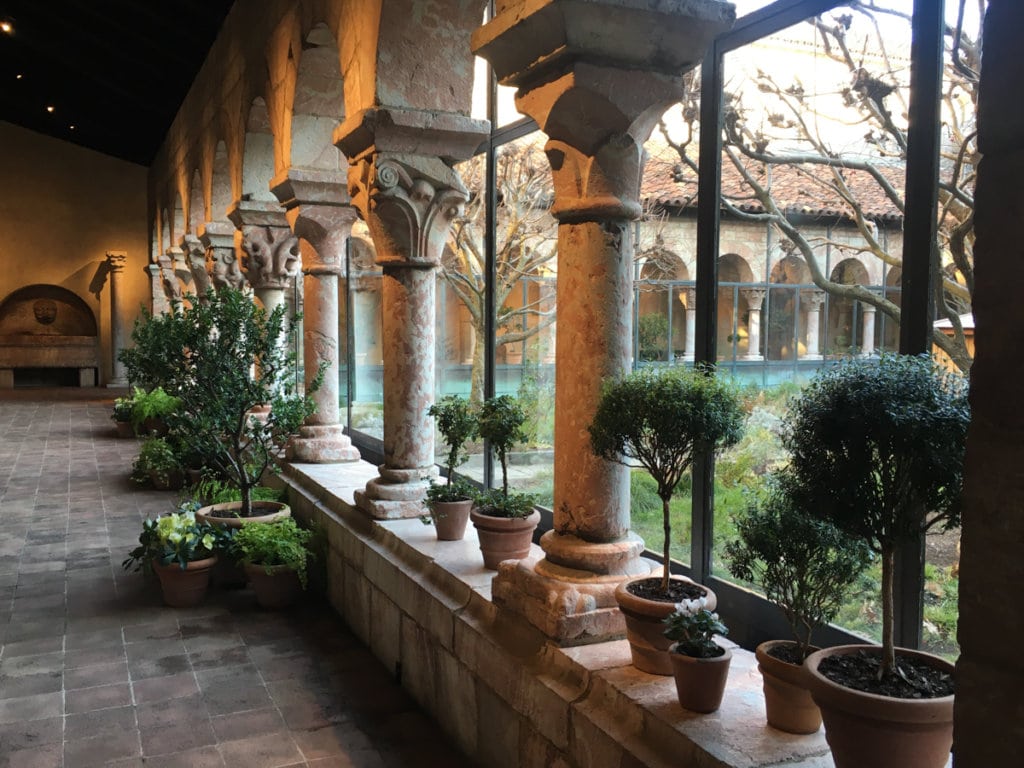
The story of how The Cloisters came into being originates with a sculptor named George Grey Barnard. Barnard was such a fan of medieval art that he brought pieces back to New York after each visit to Europe. In 1914, he opened his own museum to display those pieces.
In 1925, John D. Rockefeller used some of his fortune to help the Metropolitan Museum of Art purchase Barnard’s pieces. The Met eventually wanted a separate building for the collection and by 1938, the construction on the current building was finished and The Met Cloisters opened.
Visiting The Cloisters
- Address: 99 Margaret Corbin Drive, Fort Tryon Park, New York, NY 10040
- Hours: Thursday-Tuesday: 10a.m.-5:00 p.m. Closed Wednesday.
- Admission: New York State residents and NY, NJ, and CT students: Pay what you wish.
- All others: $25 for adults, $17 for seniors, $12 for students; members and children under 12 are FREE.
How to Get to The Cloisters
- A train to Dyckman Street followed by a 10-minute walk.
- A train to 181st Station. Transfer to the M4 bus.
- 1 train to Dyckman Street followed by a 15-minute walk.
- If driving, limited parking is available. Check website for more on directions and parking.
Learn About Local History at the Dyckman Farmhouse Museum
Step back in time as you tour an original New York farmhouse built in the Dutch Colonial style by the Dyckman family. The family has had a presence in Northern Manhattan since the 1660’s, when Jan Dyckman arrived and transformed some of this rural landscape into a sprawling farmstead.

The original farmhouse was built further east than its current location. The homestead was handed down through the generations until the Revolutionary War, at which time Jan’s grandson William was forced to leave the city. Upon his return after the war, the found the homestead destroyed.
With the help of servants and enslaved men and women, William rebuilt the house at its current location on Broadway, which was formerly Kingsbridge Road.
Over time, portions of the land were sold off and the home itself was eventually sold. By 1871, it was no longer in the hands of the Dyckman family. It was a pair of sisters who saved the home from falling victim to the urbanization of Upper Manhattan.
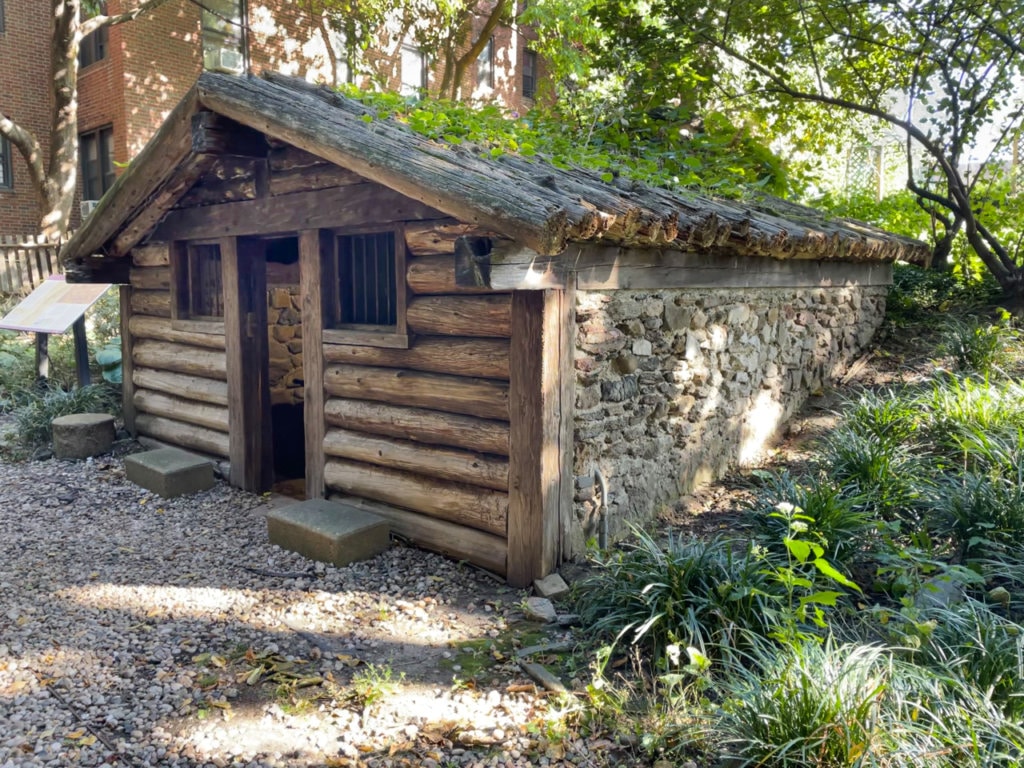
Mary Alice Dyckman Dean and Fannie Frederika Dyckman Welch, who were descendants of Jan and who feared the home would be destroyed, purchased it, restored and furnished it in the original Dutch Colonial style, and turned it into the Dyckman Farmhouse Museum.
Now, visitors can learn more Dyckman farmhouse history by touring the rooms where generations of family members lived, and also the spaces where the family’s servants and slaves kept the farmstead running behind the scenes.
Also on display in the home are objects that have been unearthed by archeologists and showcase some of the richness of Inwood’s past. Objects include Lenape stone arrowheads, horseshoes probably used on the Dyckman farm, and objects that show evidence of the daily lives of the military during the Revolutionary War, particularly the 1776 Battle of Fort Washington.
Behind the house, the garden contains two additional buildings: a reproduction of a smokehouse and a reconstructed Military Hut, which was believed to have been used by the Hessians during the war. If a volunteer happens to be out in the garden, ask if they can unlock the Hessian hut so you get a glimpse inside.
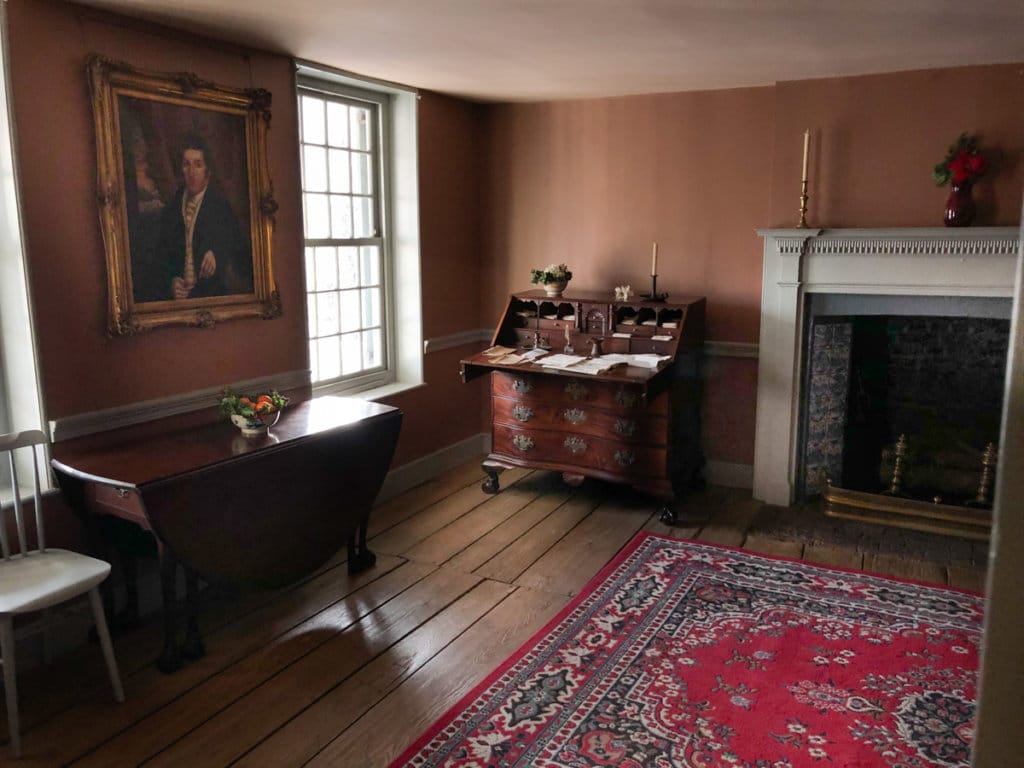
While the period rooms, artifacts, and gardens make a trip to the Dyckman Farmhouse Museum one of the most fascinating and educational things to do in Inwood, another value of visiting lies in a somewhat different string of Inwood history.
The museum is hard at work on DyckmanDISCOVERED, an initiative whose goal is to uncover the stories of Inwood’s enslaved individuals, especially those owned by the Dyckman family.

As part of this initiative, the museum curates special exhibits that are inspired by the lives of people who were enslaved by the Dyckman family and other families in Upper Manhattan.
Dyckman Farmhouse Museum also hosts lectures given by experts in Black history as it relates to Upper Manhattan, which I highly recommend. Their lectures (many are given via Zoom) are free and available online.
Visiting Dyckman Farmhouse Museum
- Address: 4881 Broadway (at 204th Street), New York, NY 10034
- Museum hours: Hours vary based on time of year.
- Museum Admission: $3. Children under 3 and Inwood residents: FREE. Admission to the garden is always FREE.
How to Get to Dyckman Farmhouse Museum
- By subway: take the 1 train or the A train to 207th Street Station (note these are separate stations. The A train brings you closer to the farmhouse.)
- By bus: Bx20 stops at 207th Street and Broadway.
- There is no designated parking available for visitors to the Dyckman Farmhouse Museum. Street parking in the area is available but limited.
Take a Self-guided Walking Tour of Inwood
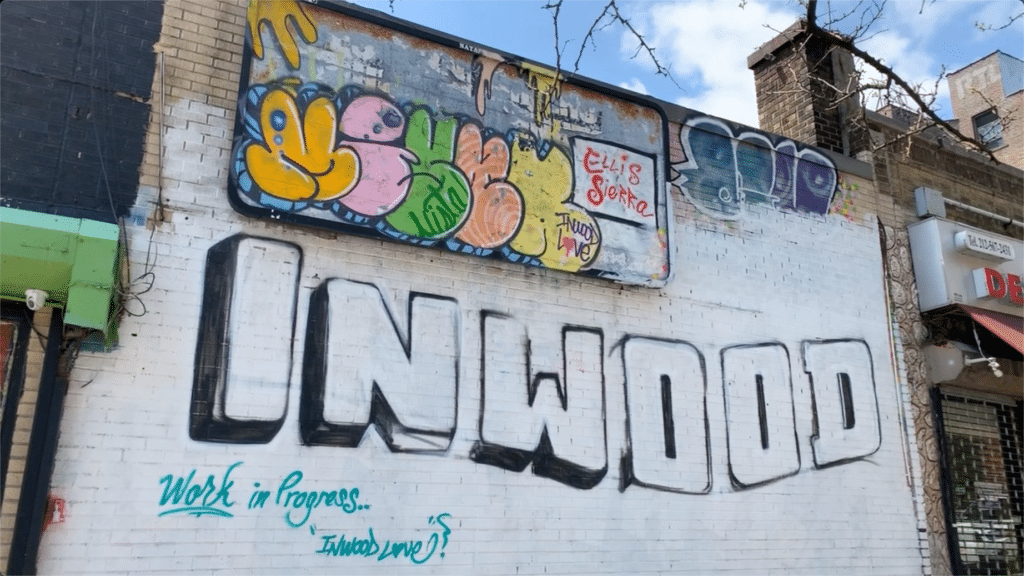
New York is a fabulous walking city and the best way to get a sense of any neighborhood is to wander. For a casual walk to nowhere special that will reveal some of Inwood’s personality, I recommend the following route:
Take the 1 train to 215th Street Station and head south on Broadway. If it’s Saturday, you’ll soon see the weekly Farmer’s Market to your right running along Isham Street. Pop in for a cider donut or pastry, or load up on your weekly produce.
Continue south on Broadway past the massive Church of the Good Shepard. Something interesting to note here is the piece of steel in the shape of a cross that stands in the churchyard—it comes from the World Trade Center and honors those lost during 9/11.
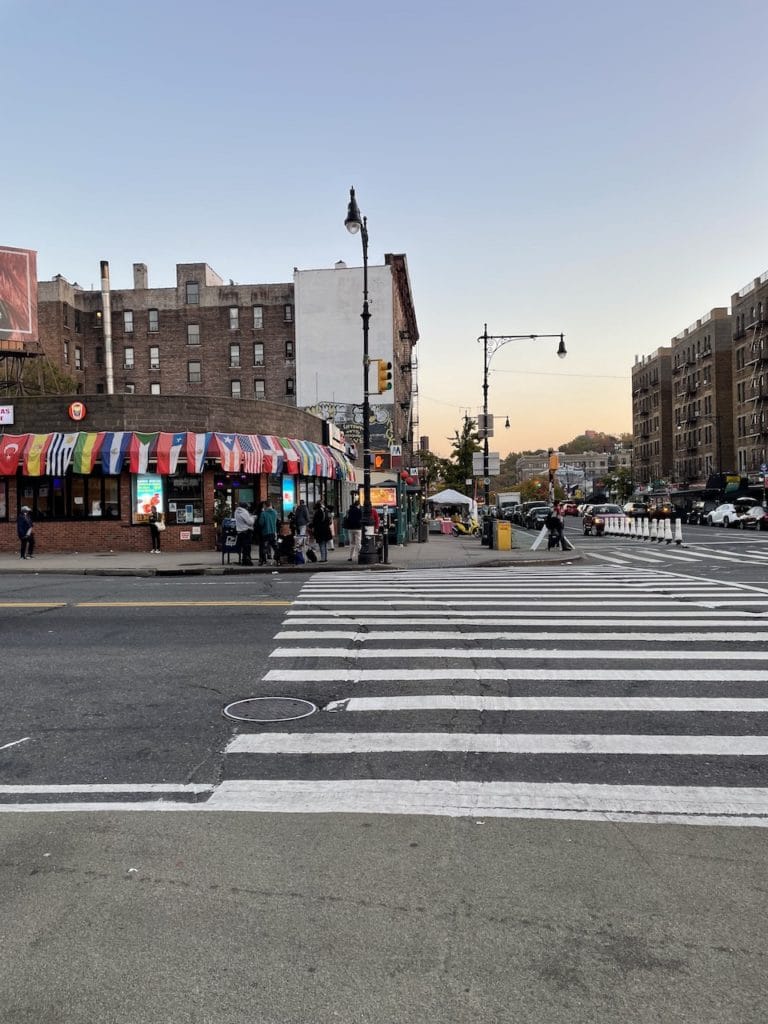
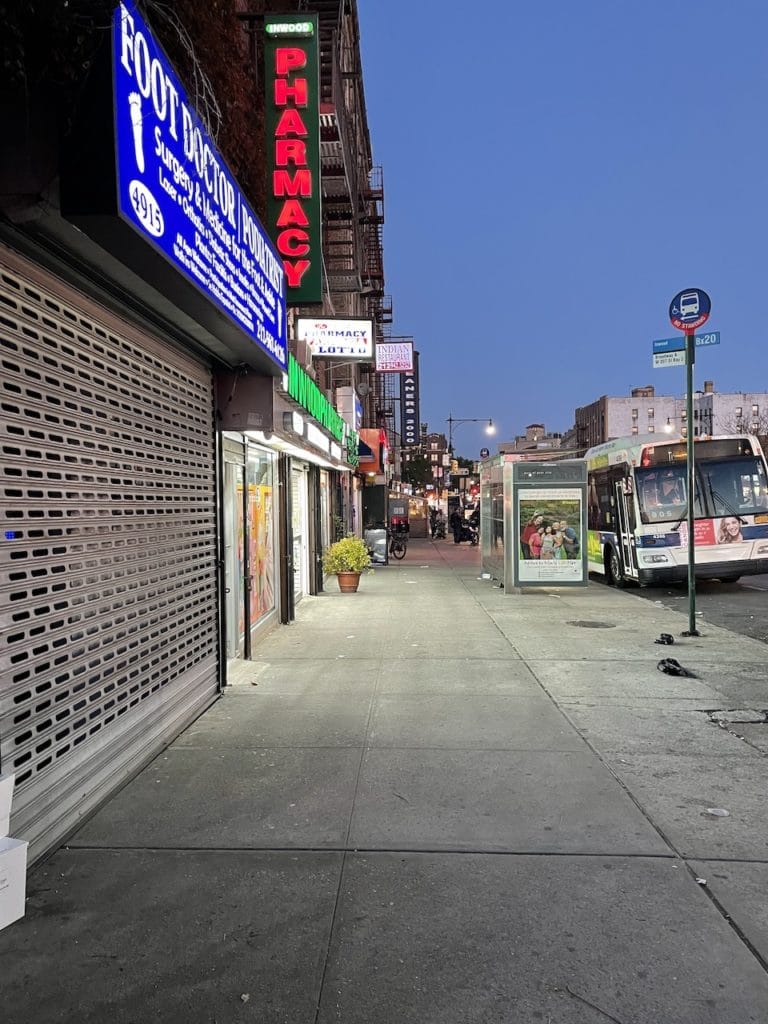
When you reach 207th Street, turn left. This is one of Inwood’s main thoroughfares and—especially if it’s a weekend—you’ll pass loads of restaurants and small businesses, not to mention merchants selling wares on the sidewalks and food carts offering various types of street snacks.
Turn right onto Sherman Avenue, a street that’s lined with post-war apartment buildings that are typical in the neighborhood, as well as plenty of shops and cafes.
At Dyckman Street, turn right and now you’ve reached the real neighborhood thoroughfare, busy with pedestrians, cars, and bikers alike. Keep heading north and you’ll find yourself at the neighborhood’s dining hotspot, located on Dyckman Street between Seaman Ave. and Broadway.
Choose from a Diverse Selection of Fabulous Neighborhood Restaurants
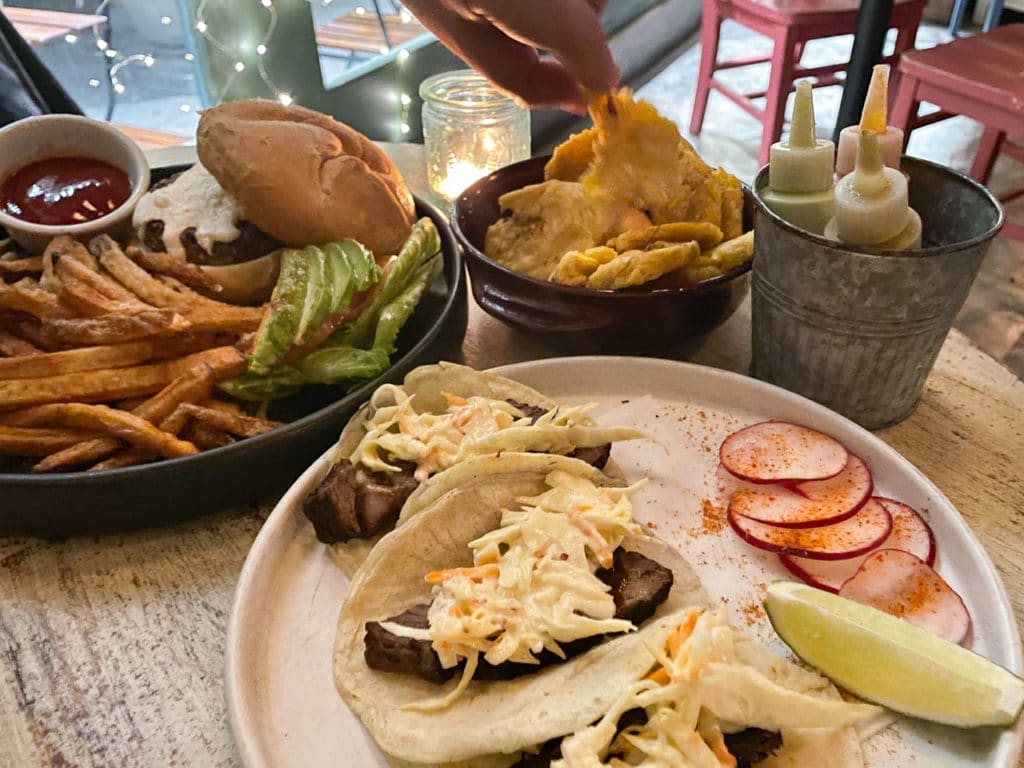
When it’s time to eat, there’s a lot to choose from so I dedicated an entire post to the fabulous restaurants in Inwood. You’ll find choices that range from Dominican cuisine, to Indian, Italian, Mexican, and more.
Attend Seasonal Inwood Events
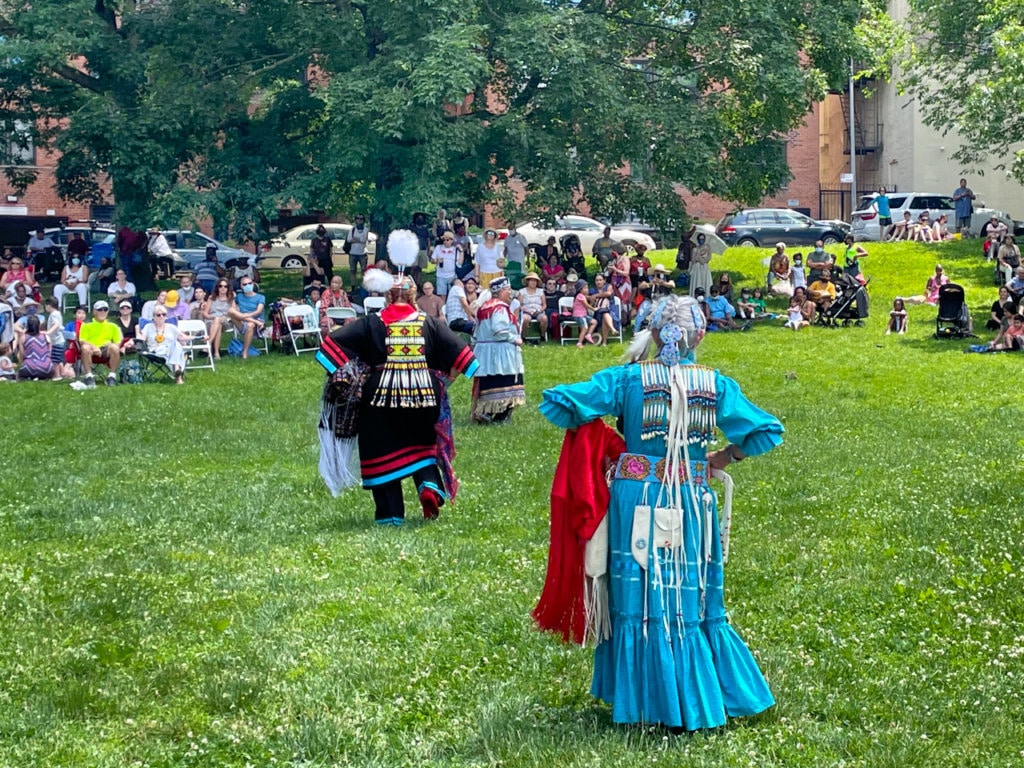
Family and friends flock to Inwood Hill Park in the summer for baseball and barbecues. Summer is also the season for Film Works Alfresco, the city’s only dual language (English/Spanish) summer outdoor movie series. It’s perfect if you’re in search of a fun nighttime activity.
Autumn brings busloads of college-sweatshirt-clad visitors to watch Columbia football games at the university’s football stadium on 218th Street. Our year-round Farmer’s Market is located on Isham Street and happens every Saturday.
And each year in June, come on uptown for Drums Along the Hudson, a celebration of Native American culture that includes dancing, live music, storytelling, and booths selling handmade crafts of all kinds.
And finally…I’m sure I’ve left out some amazing things that this diverse uptown neighborhood has to offer. If you find additional things to do in Inwood, let me know, especially since I’m always on the lookout for new local experiences! Whether you spend a day in Inwood, NYC or longer, I hope you have an awesome time!
Where to Stay: Hotels Near Inwood, NYC
The Manhattan neighborhood of Inwood is not known for its guest accommodations.
The closest hotel is Edge Hotel in Washington Heights. Located near Columbia University Medical Campus, Edge Hotel offers views of the George Washington Bridge.
You may also consider staying across the Hudson River in or near Fort Lee, New Jersey since buses run between there and the George Washington Bridge Bus Station in Washington Heights, the neighborhood that borders Inwood to the south.
How to Get to Inwood, NYC
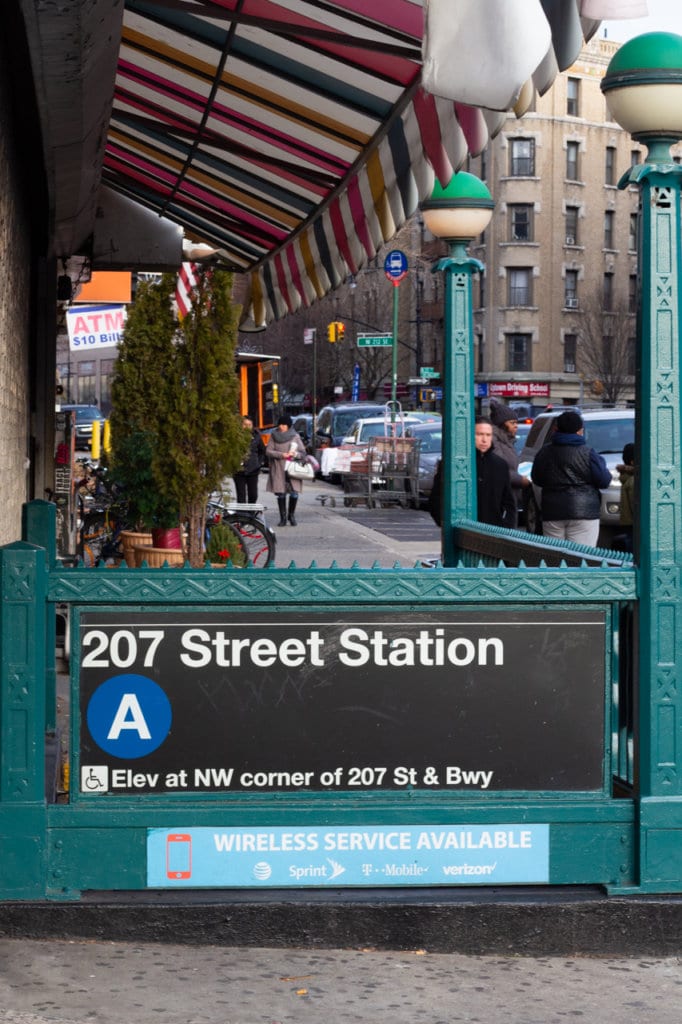
There are lots of convenient options for traveling to the northern tip of Manhattan. Choose the one that works for you:
- A train-get off at Dyckman Street or 207th Street, which is the last stop on the A train.
- 1 train-get off at 207th Street or 215th Street.
- Metro-North-Take the Hudson Line to Marble Hill Station. Walk south across the Manhattan Bridge.
- Bus-BXM1 and M100 both stop in Inwood.
- Bicycle-The Hudson River Greenway leads to Dyckman Marina if you want to ride a bike to Inwood. As a gauge, Matt and I have ridden from Inwood to Battery Park and it takes us about 2.5 hours one way.
Also, Citibike is in Inwood! There are a bunch of stations around if you want to grab a bike and sightsee on two wheels. The streets do have designated bike lanes but as in much of the city, they are not protected, so please ride with caution.
- Car-As in all of Manhattan, taking public transportation is the most convenient option. However, if you do drive to Inwood, keep the following in mind:
- The neighborhood has lots of parking garages. I suggest doing an internet search to find one closest to your destination.
- There is some free street parking available but it’s sporadic and unpredictable.
- Parking is harder to find on summer weekends and Columbia football game days.
I highly recommend visiting Inwood and exploring all there is to do in this uptown neighborhood!
Like this post? Pin it and save for future reference!
